Thomas Buelens about 001Lithium X
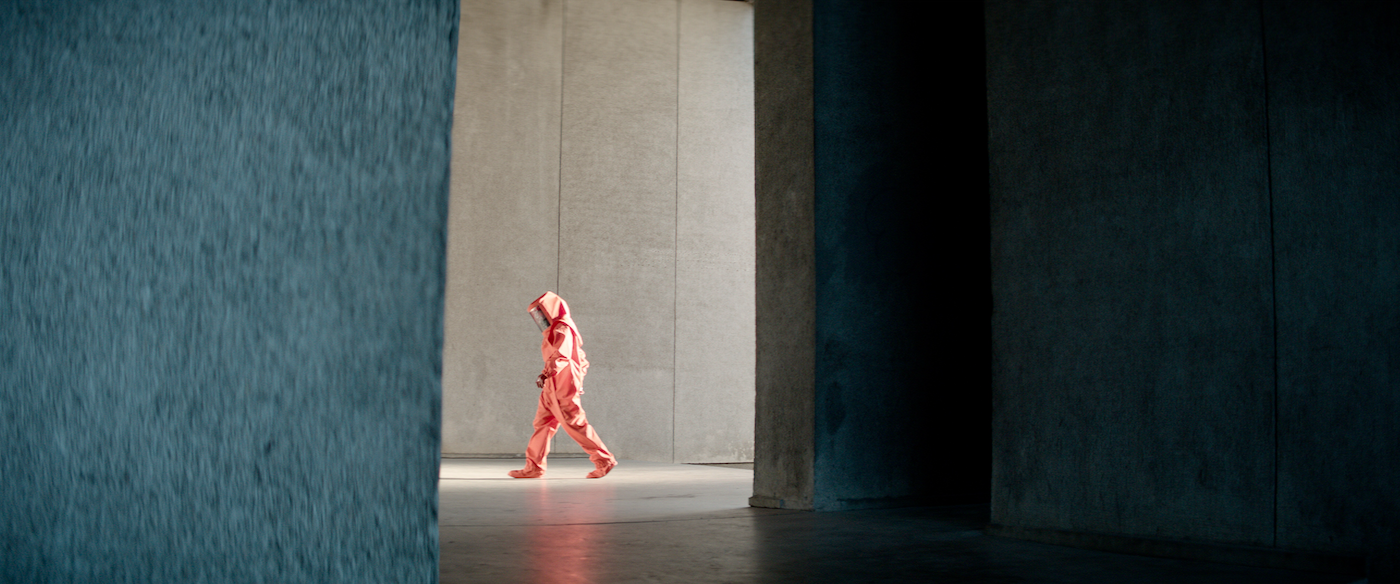
As 001Lithium X by Guy Moshe is in post-production, we took the liberty to ask Thomas Buelens, SBC, some questions about his first American movie.
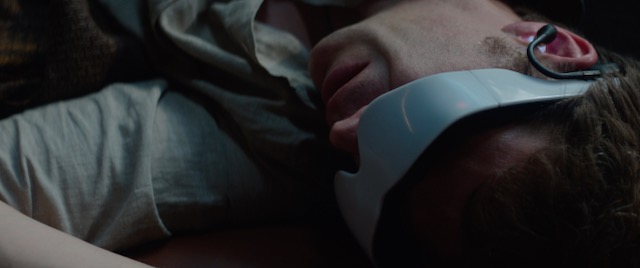
Synopsis : In a nearby future: due to the degrading ozone layer over the planet, the temperature has risen to 50 degrees Celsius during the day, therefore, turning the rhythm of life upside down – people sleep during the day and live at night. Communication in the virtual world becomes the norm blurring the limits between what is real and what is virtual. Adam Bird has an unhealthy heart. His last hope is to use a government-funded program to receive a clone heart. His ex-wife agrees, but she has a different plan…
Casting : James D’Arcy, Delroy Lindo, Gina McKee and Anna Brewster.
Production Companies : Chimera Pictures, Lituanica Films
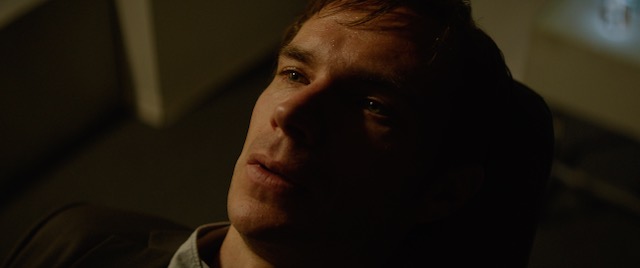
How did you come to work on this project?
TB : My feature film agent thought it would be a good film for me and sent me the script. I think I read it all at once, since it was such an interesting storyline.
Then I talked to the director, Guy Moshe. He is an Israeli director who lives in Los Angeles. He is known for Bunraku (2010) staring Demi Moore, Woody Harrelson and Josh Hartnett. Our first chat was very cool. We shared ours visions and it just clicked.
Then everything went really fast. Guy was supposed to do another film (an action movie, The Last Draw of Jack of Hearts) before this one, but it got delayed, so he decided to start the production for this one earlier. This is why we had only three weeks of prep and four to shoot. I think we missed one more week of prep and another one for shooting, but basically we managed because we had a lot of studio. Still, it was very hard on everyone, especially on Guy, because he had a lot of pressure on him.

How was it to work with Guy Moshe?
TB : At first it was a bit challenging. Like I said we didn’t have a lot of time to prep and since it was the first time we worked together, we had to learn how really fast. But once we started shooting everything went smoothly. We almost didn’t have to discuss, because we had a really nice connection. Another nice thing about him was that he is very knowledgeable and experienced. He had a very strong and clear vision of his film, he knew exactly how everything will be edited and how he wanted to tell this story, so I just had to lean into his vision and suggest my ideas.
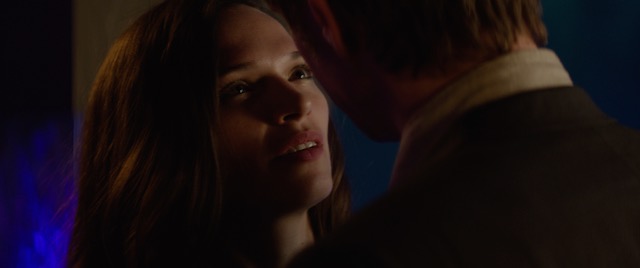
Can you give us some intel about the content of the project, what is the story about in your opinion?
TB : It’s a satirical psychological drama about one man’s acceptance of his mortality. It looks a bit like a sci-fi movie, but more foresight than classic sci-fi, because in fact it’s very realistic. The future described is the one right in front of us if we don’t change, with the whole issue on pollution, global warming and the ozone layer deteriorating. It’s really scary to realize what could happen maybe thirty or forty years from now.
When I read the script, I was really sunk into it, because certain moments of the story really flip you upside down. You can’t predict what is going to happen next.
To summarize it : the whole world lives during nighttime, because during daytime there is too much pollution and radiation, and it’s too toxic. Plus everybody lives almost exclusively through virtual interactions. On the contrary, our main character is very stubborn and old-school, so he decides to still live physically during the daytime. For instance, he still goes to his office and sits there alone.

I suppose for a DP it must have been really challenging : how do you represent the future ? How do you light it ?
TB : Exactly. We saw the future in a dirty and decaying way. The choices we made artistically and visually were to enhance that decay of the world. So we made everything dusty and desertlike, the buildings are not well-maintained etc. It’s one of the reasons why we chose to shoot in Lithuania: you still have amazing Soviet buildings, which are so mysterious that you can’t really point where it’s located, it could be Los Angeles thirty years from now or Europe.
Another challenge for me was to really separate daytime from nighttime.
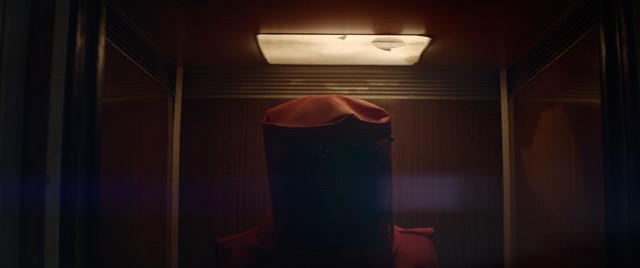
I suppose for the nighttime you used a lot of artificial lights?
TB : Yes. Our main reference was just a medical problem that occurs in some part of the world during winter; for instance in the high north of Scandinavia and Iceland where they only have a few hours of sun per day during the winter, they use light therapy to get through those months. With that on our mind, we asked ourselves: how do people survive without any sunlight providing vitamin D and other vital stuff? And then we came up with this idea: maybe all the lights should be UV lights. Since people don’t get sunshine anymore, they need UV lights in order to survive. Then we decided for some lights to go really purple, like for the street lights, and for the inside lights, to choose a more orange spectrum of the UV gamma.
Furthermore, as people live at night, we imagined they would have their own special tainted lights behind the windows that they would change to UV when they need vitamins, but also change the coloring as they please. In order to create those effects we used a lot of Arri Skypanels, the L7 and the L10 for instance, because those LEDs allow you to change colors and intensity very fast.
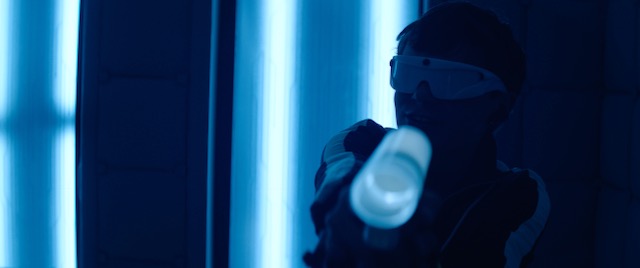
And what about the daytime ?
TB : For the outside daylight settings, we really wanted the viewer to feel like the protagonist was burning and that they could almost feel the heat coming from the screen. We managed to do this with a lot of lights: Dino’s, 20KW, Jumbo lights just blasting on the character. It was really tricky for James D’Arcy who played the main character, because, in the film, in order to get outside, he has to suit up in a rubber suit with a mask to protect himself from the radiation, but in reality, it was really hot under those lights. So every time he had his suit on, we had to go really fast, so that he wouldn’t burn up. It was really uncomfortable, but he gracefully succeeded as he knew the results would be worth it.
The heat is also enhanced by the lenses we chose because they create a nice glow and burn the highlights.
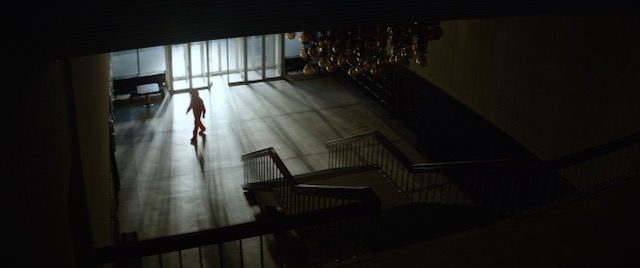
What lenses would that be ?
TB : We did a lot of tests from Vantage Hawks, Lomo, Master anamorphic to Kowa lenses and we finally decided to go with the Kowa anamorphic. It was the best artistic choice, but not the easiest, because as many DPs will know, Kowas are so old that you have to be lucky to get a right set. That was actually the biggest issue of this film: the lenses were degrading more and more during principal photography. They really had some focus shift and the glass really moved around. I think we had like four or five lenses in the set, but by the end, we could only use two of them, the others had too many aberrations. That’s why we had two other sets shipped, one from Poland and an other one from another part of Lithuania. But they also had problems, so at the end we had to use lenses from each set. It really was a nightmare for the focus puller. But I still think the Kowas were the right choice. First, because we really wanted the anamorphic feel, and second, to enhance the dirtiness of the image thanks to soft focus and aberrations. We got more than we wished for, though, but with other lenses, it would have been too clean, too sharp, too pretty and not edgy enough and rough like our vision of the future. Plus the Kowas produce a beautiful glow that really helped me for the exteriors. Personally, I also liked the Lomos, but the director wasn’t a big fan of them, because it had too much distortion.
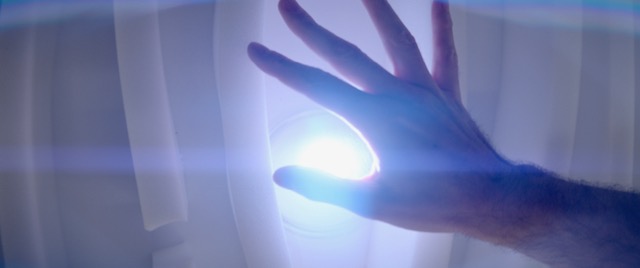
What camera did you use ?
TB : We shot with the new Alexa SXT. I really pushed for this camera, because I had worked with it a lot on commercials. The sensor is much improved compared to the Alexa XT or the Mini. They used an equivalent, but smaller sensor and the same hardware and software as the Alexa 65. The RAW is improved in high and low lights and the noise is really reduced. Since half of the movie takes place during nighttime, I had to underexposed a lot, and it was really helpful to have a better sensitivity. Plus UV colors have a very special color gamma, especially when you want to capture the purple UV range like we did. It’s very tricky to get the correct color on the sensor and the more color depth it has, the better.
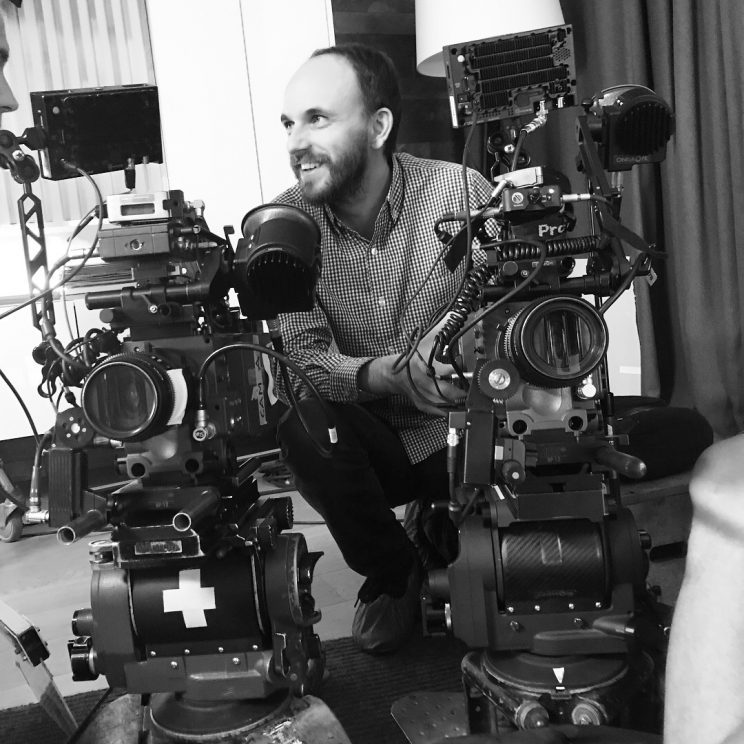
Since it’s a very good camera, but almost as heavy than the old XT and moreover compared to the Mini, I suppose you didn’t use a lot of handled or stabilized shots ?
TB : Yes, the camera is quite heavy, but with the Kowas it’s doable, because they’re very light lenses. I am used to work with Vantage V-Plus, Cooke, Master or Panavision anamorphic lenses. If you put those in front of an Alexa SXT you will most certainly break your back on a long handheld shoot. But for artistic reasons, we didn’t use a lot of handled. They represented maybe 5% or 10% of the movie.
In the beginning of the movie, we did only fix frames with wide lenses, almost like a “tableau”. We really wanted the main character to evolve freely.
Then, while everything goes wrong for him, the lenses are closing up and the camera moves more in order to enhance a claustrophobic effect. At first we did very smooth, very cinematic moves, using a Fisher dolly and articulated arms.
Towards the end, we used a lot of Steadicam. The worst his life gets, the faster the camera moves physically around him. The idea was that the more the movie unfolds, the more the viewers get drawn into it, they can feel what the character feels: like in the middle of a tornado.

When did you shoot?
TB : We shot mostly in June and July 2017. But because the weather is always so unpredictable in Europe, and we really needed sunny exteriors, we still have one week of shooting planned in the spring in the desert nearby Los Angeles.
Did you had any specific difficulties besides the Kowa set ?
TB : Yes, for obvious reasons since the people in the film live during the night, we had to shoot quite a few exteriors during nighttime. And for scheduling reasons we had to shoot these nights in the middle of the shoot and it was very hard on all of us. But in the meantime, it was quite funny, because, as our characters, we had to live at night and sleep during the day. We were kind of living inside the story. (Laughter)
Plus we had another problem: we were shooting a nighttime film during the worst period possible, the summer! When the nights are getting shorter and shorter. We even shot during the shortest night in the year! We had maybe four hours of real darkness. This was very challenging for me. When you are tied up by the budget or the planning, you can always do 10 minutes overtime to finish a take. But you can be the best DP in the world, you can’t fight the sun. If the sun comes up, it’s over. It was very hard, but in the same time, kind of amazing to work under this pressure…

How did the work with the actors go ?
TB : The main character is played by a really interesting actor, James D’Arcy, who recently starred in Dunkirk by Christopher Nolan. I would say he is almost in every scene of our movie, so it was very challenging for him. He is a very cool guy offset, always joking around etc. When the camera starts rolling, he snaps into perfect character. We also worked with Delroy Lindo who played in a lot of Spike Lee’s films, like Malcolm X. He’s a remarkable actor. We also had the sweet Anna Brewster, a British actress, who played in Versailles and Stars Wars VII. It was really important to have such amazing actors, because this movie is character driven.
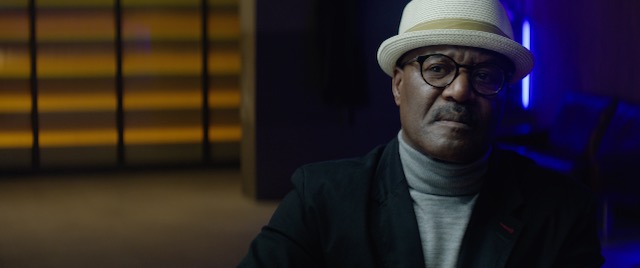
How about your collaboration with the other departments : make-up, costume design, art direction, etc. ?
TB : We all had a few weeks of prep and every department managed to get ready in a very short time, which was kind of amazing. For instance, the art director only had two weeks to build an entire house interior, and they did a beautiful job.
I made two beautiful encounters on this set:
I couldn’t choose my own crew, so I had to work with people I had never met. It was very challenging for me to trust people I didn’t know, hoping they will do a good job. I really enjoyed working with my gaffer, Vitalij Kutko. He was one of the best gaffers I’ve ever worked with. He was very motivated and super experienced. He worked on a lot of American films like Defiance by Eward Zwick and Transsiberian by Brad Anderson. I think we had like six or seven people on the electrical department, maybe less on the studio part. But for them it was very tricky, because they had to wait for the set to be built to begin the pre-light. They started rigging the lights while the art department was still painting. We only had one day of pre-light, which was nothing for a film like this. For instance we had a really big window inside the house, 8 meters wide by 4 meters high, through which we would see a big skyline on the background. For this we used a Translight that we had to fly over from the UK and we had a big lighting rick for all settings: day, night, magic hour etc. For obvious planing reasons, they had to rig and program all the lights before the shoot. My gaffer really saved us because he was able to work really fast.
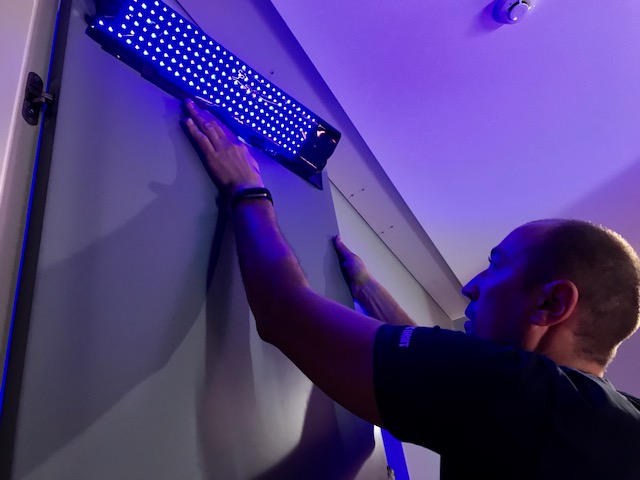
I also really enjoyed working with our first assistant director, Laura Stankevičiūtė, who was also an amazing talented person. When you shoot for three weeks inside a studio, you can become a bit claustrophobic, but she managed to keep the moral high with good vibes while keeping everything on schedule without too much overtime.
Not a lot of DPs talk about the 1st AD, it’s really interesting.
TB : Yeah I can understand why, because mostly they’re here to push you all the time, but if you have somebody like Laura, they will set you a time keeping in mind that everybody is working as fast as possible. Laura didn’t come to me every five minutes to ask “how long?” What I liked most about her is that she was able to appreciate that sometimes you need more time in the beginning of a day in order to gain time afterwards on each shots for minor adjustments. And this is better for everyone, you know? Especially for the talents who can stay in their character, moreover when you work with big calibers like we did.
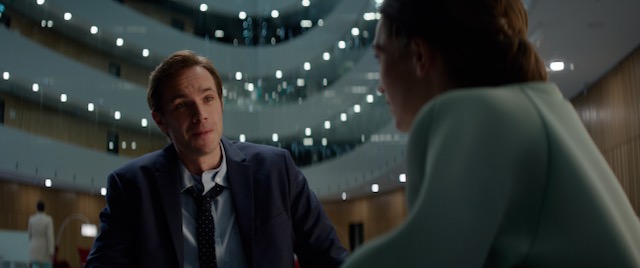
What about the post production of the film?
TB : Well, as you know it’s still going on, but the director is very happy with the images and quite surprised which is nice, because normally directors hate the first cuts.
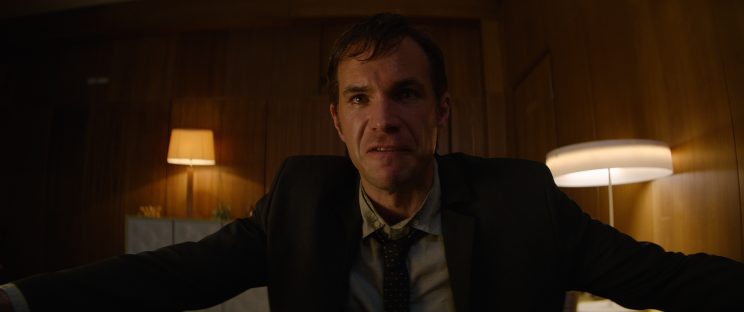
Did you use any LUT on set?
TB : I don’t use any other LUTs except the standard REC709. I like to have one fixed point of reference that I can trust on to judge how far I can go with lighting.
I feel that when you use a custom LUT, which will for sure still change during grading you can get carried away and limit yourself in some parts because you were adapting to that LUT. I find it tricky enough with the lack of a standardisation between monitors and color spectrums to have a solid point of reference, so I stick with the REC709 to limit extra discrepancies. I’m very interested in the new ACES standardisation and hope it will be more widespread soon.
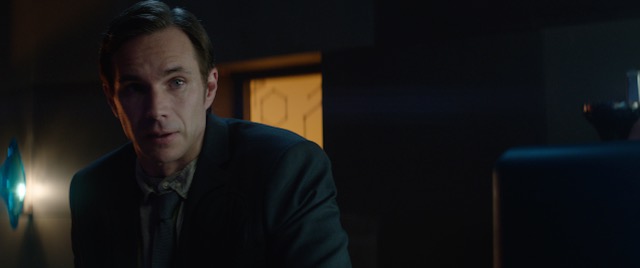
So the movie won’t be released anytime soon?
TB : It should be released somewhere end of 2018.

Material:
Camera : Alexa SXT and Kowa anamorphic
Crew :
Gaffer : Vitalij Kutko
Grip: Vytautas Gudlevičius
